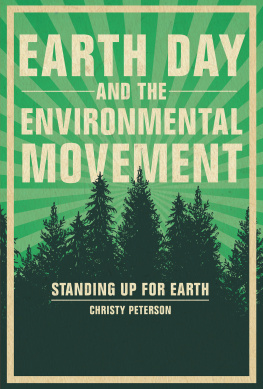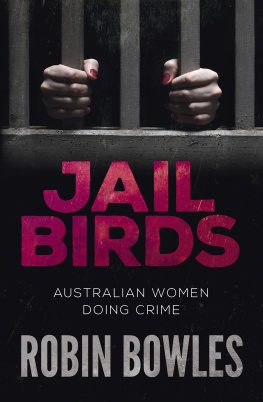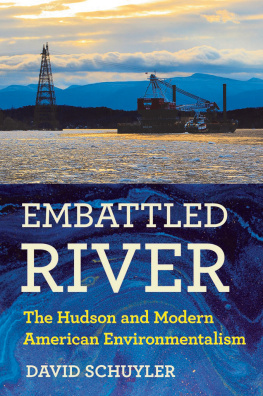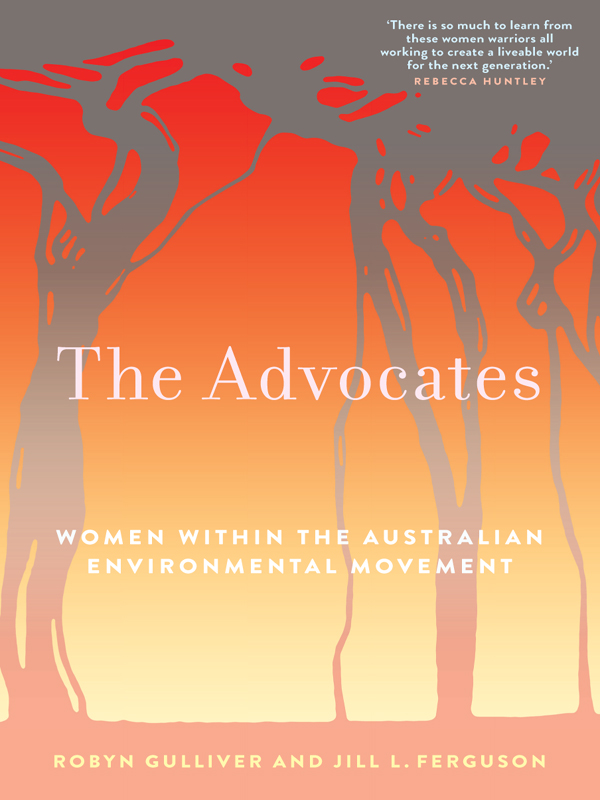Table of Contents

MELBOURNE UNIVERSITY PRESS
An imprint of Melbourne University Publishing Limited
Level 1, 715 Swanston Street, Carlton, Victoria 3053, Australia
www.mup.com.au

First published 2021
Text Robyn Gulliver and Jill L. Ferguson, 2021
Design and typography Melbourne University Publishing Limited, 2021
This book is copyright. Apart from any use permitted under the Copyright Act 1968 and subsequent amendments, no part may be reproduced, stored in a retrieval system or transmitted by any means or process whatsoever without the prior written permission of the publishers.
Every attempt has been made to locate the copyright holders for material quoted in this book. Any person or organisation that may have been overlooked or misattributed may contact the publisher.
Typeset by Sonya Murphy
Cover design by Peter Long
Printed in Australia by McPhersons Printing Group

9780522877793 (paperback)
9780522877809 (ebook)
CONTENTS
Jan McNicol, Brisbane, Qld
Jane Bremmer, Perth, WA
June Norman, Cooran, Qld
Caro Shields, Sydney, NSW
Jill Redwood, Goongerah, Vic
Mikaela Jade, Sydney, NSW
Robyn Murphy, Perth, WA
El Gibbs, Blue Mountains, NSW
Heather Barns, Brisbane, Qld
INTRODUCTION
HOW MANY PEOPLE DO you know who might call themselves an activist? A single person here or there? One in a hundred? It might not seem like many. But replicate this across a nation of 25 million people and thats 250 000 activists scattered across our communities, workplaces and homes.
Most of them wont fit the loud, angry and pushy stereotype. Instead they will be quietly going about their workalmost certainly in their spare timedriving the activities of the thousands of environmental groups and tens of thousands of charities in Australia. They can be seen planting trees at the weekend or emailing politicians at 11 p.m. They may be on the side of the road, arms extended as they grip signs asking for climate action, or perhaps on a podium, as they speak to crowds about their hopes and dreams for a future that is burning before their eyes.
Perhaps you know one of these volunteers; perhaps you are one yourself. If so, you might know that its not an easy thing to be.
Women volunteer in droves. Collectively, almost a third of them give hundreds of millions of hours of largely hidden and quiet labour to the causes they hold dear.
Their efforts might pass in the periphery of our mental attention, but Ive noticed these women more and more. As summers grow longer, hotter and drier, Ive wondered how they shoulder the burdens and setbacks they experience as we hurtle towards a climate catastrophe.
They are at countless meetings, rallies and market stalls; Ive seen them painting banners and handing out flyers. Most of them are doing the hard slog of activism, the perpetual mundane tasks of organising the day in, day out activities that are required to change the world while balancing jobs and families. How do they keep doing it when the future can look so bleak? When rainforests burn out of control and ash turns the air of our cities into a dense and murky soup?
Before we faced these blood-red skies women endured a hostile, misogynistic and violent world. We have always faced challenges, and within the ranks of women leaders have always emerged. So who better to answer the question how do you keep doing it? than these women themselves?
***
The idea of a book first came to me when I was at Camp Binbee. Located halfway between the Great Barrier Reef and one of the largest proposed new coal mines in the world, the camp is the front line of the fight against climate change in Australia. After a long journey northwards I had found myself in the presence of a diorama of diverse womanhood. I sat with a high-tech project manager in charge of satellite communication during lock-ons near the mine site. I cooked dinner with a retired nursing manager, soft spoken, demure, but willing to give her life if it could help stop climate change. I saw a brash and brusque student turn the key on a lock connecting her neck to a mine site gate, outraged at the world but worn down by the scale of the war. Never have I been around so many women with so many different experiences and so many unique insights.
It was while we painted umbrellas that I realised that these were stories that needed to be told. The morning was hot, and the hours were spent interminably, endlessly, slowly waiting. A group of women had converged around a long table covered in umbrellas, dipping brushes in the congealing, heat-curdled paint.
Without warning Sue lifted her bright yellow umbrella high up towards the sky. A slender, graceful woman in her late sixties, she took a step forward as the umbrella started to spin in her hands. We watched, laughing in time with the tinny strains of a melody wafting across the camp from a distant radio. Her feet kicked up the dry dust, each grain defying gravity as it swirled around our legs. Like the grainy slides seen through an old projector, a series of images were imprinted on my memory as each spin of the umbrella momentarily blocked out the glare of the unforgiving sunlight. Image by image the details of the camp and its inhabitants came into focus.
At the open-air kitchen two women cut up tomatoes for lunch. Karen sat at the desk by the caravan, charging her satellite phone at the only power supply. Three women sat on plastic chairs under a tarpaulin drawing shapes in the dirt with a eucalyptus branch. A young woman was roped up in a tree practising her climbing skills. Two men crouched next to a pile of drums and pipes, preparing for the next days coal train blockade. A group of women hunched over the computer, choosing videos to upload to promote the campaign.
Its not that there werent enough men here. They were out, hundreds of kilometres away, scouting for forest-clearing diggers and bulldozers sanitising the land in preparation for the mine. But as the umbrella dipped and the suns glare returned, I turned back to face Sue and the other women painting the umbrellas. At that moment, it seemed that environmental activism might just be a womens game.
Jan, ever astute, had noticed my fixation. We probably need a strategy for getting more men involved. Jan and I had known each other for a while, and our conversations often turned to gender issues. Even the cops noticed in Bowen: when the ten of us got arrested on Abbot Point Road, there were eight women and two men. They said, Where are the men?
***
The over-representation of women in social movements is nothing new. Women are less likely to engage in political participation but more likely to volunteer and give money to environmental causes.
But what about activism? Although we know that in egalitarian contexts both men and women participate in activism equally, the type of activism they engage in can differ. One study suggests that men engage more than women in confrontational activities. Its just one finding in one study, but it is revealing. This small detail might matter more than any other factor in determining what we know about environmental activists. Stories of famous campaigns, of celebrity activists and our perceptions around what sort of activism works might affect womens conception of what activism is, who does it and whether they will join in. Why? Because most of the narratives about our iconic environmental campaigns have been centred on those moments of confrontation.












